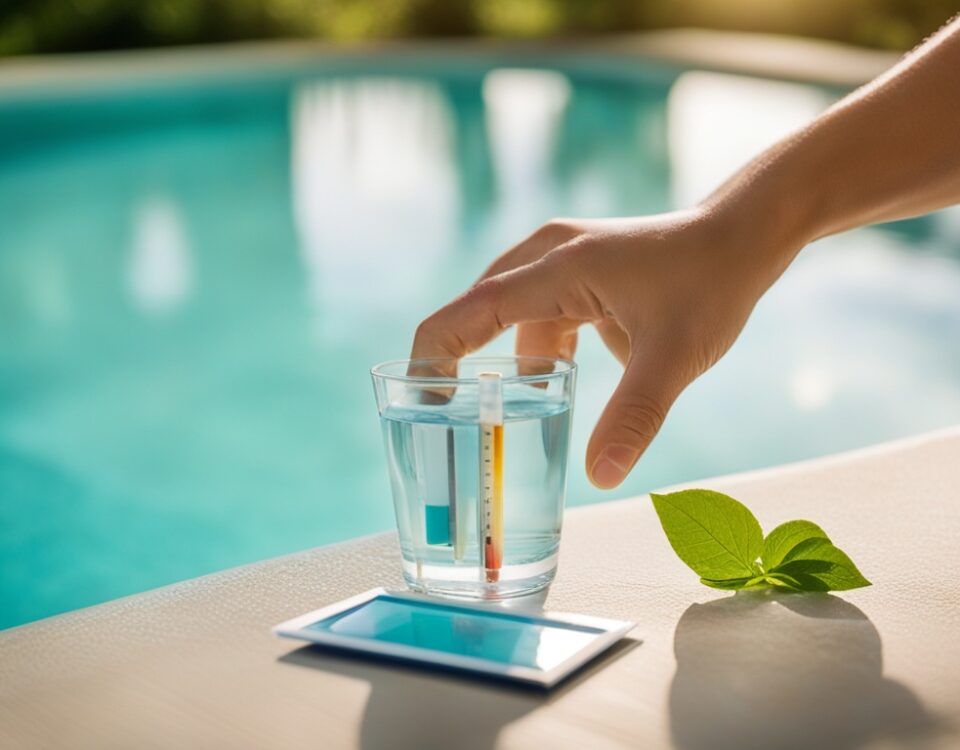Revamp Your Routine: Ultimate Pool Cleaning Schedule Guide

Pool Perfection: Unveiling the Definitive Guide to Gunite vs. Shotcrete
May 13, 2025
Decoding Pool Heater Types: Your Complete Guide
May 13, 2025Overview of Pool Cleaning Schedule
Maintaining a regular pool cleaning schedule is paramount to ensuring the health and longevity of your swimming oasis. *Neglecting this crucial aspect* can lead to unsightly algae buildup, harmful bacteria growth, and even structural damage to the pool itself. A well-structured cleaning routine not only enhances the aesthetic appeal of your pool but also contributes to a safer swimming environment for you and your loved ones.
The Importance of a Regular Pool Cleaning Schedule
In the world of pool maintenance, consistency is key. A *regular pool cleaning schedule* allows for the proactive management of potential issues before they escalate into costly problems. For instance, routine checks can detect leaks, cracks, or any deterioration of pool materials. Furthermore, adhering to a consistent schedule cultivates habits that prevent *overwhelming cleaning sessions* during high-use seasons, saving time and effort.
Benefits of Following a Consistent Cleaning Routine
There are a myriad of benefits associated with a well-maintained pool cleaning schedule. Below are some of the most compelling advantages:
| Benefit | Description |
|---|---|
| Enhanced Water Quality | Regular cleaning reduces contaminants, ensuring that the water remains fresh and clear. |
| Health & Safety | Consistent cleaning minimizes the risk of waterborne illnesses, providing a safer swimming experience. |
| Cost-Effectiveness | Proactively addressing maintenance can prevent expensive repairs and prolong the lifespan of pool equipment. |
| Aesthetic Appeal | A clean pool attracts users and enhances the overall appearance of your outdoor space. |
| Increased Usage | A well-maintained pool is more inviting, encouraging frequent use and enjoyment. |
Establishing a pool cleaning schedule can greatly assist in reaping these benefits. Whether you choose to hire professionals or embrace DIY maintenance, the *diligence of routine* will provide peace of mind and a delightful swimming experience. Additionally, it fosters a sense of responsibility towards your investment, ensuring a sparkling pool that beckons on warm summer days.
In conclusion, prioritizing a regular pool cleaning schedule is an indispensable practice for pool owners. By embracing this routine, you not only protect your pool and its surroundings but also encourage a healthy lifestyle that revolves around water recreation. Enjoy the various benefits of a harmoniously maintained pool—it’s the pinnacle of both utility and leisure.
Daily Pool Maintenance Tasks
Maintaining a pristine swimming pool requires diligence and a well-structured daily cleaning schedule. Engaging in regular maintenance tasks not only ensures the visual appeal of your pool but also enhances the longevity of the equipment and improves overall water quality.
Skimming the Surface
One of the most fundamental daily tasks is skimming the surface of your pool. Utilizing a pool net, you should remove leaves, debris, and any floating contaminants that may detract from the aesthetics and hygiene of the water. *Establishing a routine skimming process early in the morning or later in the evening*, when debris is most prone to accumulate, can maximize the effectiveness and efficiency of this task.
Brushing Pool Walls and Floor
Daily brushing of the pool’s walls and floor is indispensable. By using a specialized pool brush, you can dislodge dirt, algae, and mineral deposits that may cling to surfaces, preventing their buildup over time. *Incorporating a methodical approach* to this task — such as brushing from the shallow end to the deep end — not only ensures thorough coverage but also makes the process faster and easier.
Checking Chemical Levels
Monitoring the chemical levels of your pool water is paramount for maintaining a safe swimming environment. Daily testing of pH, chlorine, and alkalinity levels will help ensure that the water remains balanced. *Utilizing a quality test kit or digital tester* can provide accurate readings, allowing for quick interventions if levels fall outside the ideal range. It is advisable to document these readings to track any fluctuations over time.
Filter System Maintenance
While not strictly a cleaning task, ensuring that your filter system is functioning optimally is critical. Daily checks of the filter pressure gauge can indicate whether cleaning or backwashing is necessary. Maintaining a clean filter will enhance water circulation and clarity, reducing the need for excessive chemical treatments.
Quick Tips for Efficient Maintenance
- Establish a Routine: Set aside a specific time each day for maintenance to create a habit.
- Invest in Quality Tools: Using high-quality pool maintenance tools can save time and effort in the long run.
- Involve Family Members: Assigning tasks can distribute the workload, making maintenance a family affair.
- Keep Supplies Handy: Store all necessary supplies and tools in one location to minimize search time.
Useful Daily Maintenance Checklist
| Task | Frequency |
|---|---|
| Skim Surface | Daily |
| Brush Walls/Floor | Daily |
| Check Chemical Levels | Daily |
| Inspect Filter System | Daily |
Weekly Cleaning Checklist
To maintain the pristine allure of your swimming pool, adhering to a well-structured weekly cleaning schedule is indispensable. This ensures that not only the aesthetic appeal is preserved but also that the *health and safety* of the swimmers are prioritized. Below is a detailed checklist of tasks that should be executed weekly to ensure your pool remains in optimal condition.
1. Vacuuming the Pool Floor
One of the most crucial steps in your *weekly pool cleaning routine* is vacuuming. This task involves removing debris and sediment that accumulate at the bottom of your pool. Use a high-quality pool vacuum suited for your pool type—either manual or automatic. Regular vacuuming not only enhances the visual appeal of your pool but also prevents dirt build-up that can lead to algae growth.
2. Scrubbing the Pool Walls
The walls of your pool can collect algae, grime, and other undesirable substances. Scrubbing the walls weekly with a pool brush will help eliminate any buildup. Pay particular attention to corners and steps, where deposits are more likely to accumulate. This task is key in preventing future issues that may arise from neglecting wall cleanliness.
3. Cleaning the Pool Filters
Your pool filters play an essential role in maintaining water clarity and quality. Make it a point to clean the filters weekly; this may involve rinsing them with clean water or backwashing them if your system allows. A clean filter ensures that your pool water circulates efficiently, reducing chemical imbalance and improving overall water quality.
4. Skimming the Water Surface
Debris such as leaves, insects, and other contaminants tend to float on the surface of the water. Skimming the pool surface with a net should be a routine part of your weekly maintenance. This not only keeps your pool looking inviting but also reduces the organic matter that can sink to the bottom and contribute to water quality issues.
5. Inspecting Pool Equipment
Regular inspection of your pool equipment is vital in detecting potential issues before they escalate. Check pump, heater, and filtration system performance. Ensure there are no unusual noises, leaks, or signs of wear. Addressing these problems promptly can save you from more costly repairs in the long run and guarantee consistent pool operation.
| Task | Frequency | Importance |
|---|---|---|
| Vacuum Pool Floor | Weekly | *Removes sediment and prevents algae growth* |
| Scrub Pool Walls | Weekly | *Prevents algae and grime buildup* |
| Clean Pool Filters | Weekly | *Ensures efficient water circulation* |
| Skim Water Surface | Weekly | *Improves pool aesthetics and water quality* |
| Inspect Equipment | Weekly | *Detects issues early, avoiding costly repairs* |
Incorporating these tasks into your weekly cleaning regimen is essential for maintaining the *lifeblood* of your swimming pool. By doing so, you not only ensure a safe and inviting swimming environment but also extend the longevity of your pool and its components.
Monthly Maintenance Tips
Maintaining a pristine swimming pool goes beyond routine weekly cleaning; it necessitates a comprehensive monthly maintenance schedule to ensure longevity and impeccable water quality. By dedicating time each month to pivotal tasks, pool owners can avert costly repairs and prolong the life of their equipment. Below, we delve into essential monthly tasks that every pool owner should prioritize.
Water Balance Check
One of the foremost tasks in your monthly maintenance checklist is checking the water balance. This entails measuring the pH, alkalinity, and calcium hardness levels. Ideally, your pool water should maintain a pH level between 7.4 and 7.6 for optimal swimmer comfort and chlorine efficiency. If either pH or alkalinity levels are off-kilter, you can remedy this with appropriate chemical adjustments. Regularly balancing your pool water not only enhances clarity but also prevents scale buildup and equipment corrosion.
Leak Inspection
Another critical component of your monthly routine is a thorough inspection for leaks. A leaking pool can result in not only significant water loss but also extensive damage to your pool’s infrastructure. To conduct an inspection, check all plumbing, skimmers, and returns for signs of dampness or cracking. Additionally, monitor the water level; if it drops significantly over a month, you may need to investigate further for potential leaks.
Servicing Equipment
Monthly maintenance should also extend to the pool equipment which includes the filter, pump, and heater. Inspect these essential components for any signs of wear or damage. Clean or replace the filter media as necessary, and ensure that the skimmer and pump baskets are free from debris. By routinely servicing your equipment, you enhance its efficiency and prevent unexpected breakdowns that can arise from neglect.
Preventing Common Problems
Establishing a regular monthly maintenance schedule aids in the prevention of common pool maintenance problems. By addressing minor issues before they escalate, pool owners can save time and money. For instance, regular water testing can ward off algae blooms, while timely equipment servicing can minimize the risk of mechanical failures. Consistently attending to these tasks ensures a smooth and joyous swimming season.
| Task | Recommended Frequency | Benefits |
|---|---|---|
| Water Balance Check | Monthly | Prevents algae growth and equipment damage |
| Leak Inspection | Monthly | Conserves water and protects infrastructure |
| Equipment Servicing | Monthly | Enhances efficiency and prevents costly repairs |
In conclusion, adhering to a structured monthly maintenance schedule ensures that your pool remains an oasis of relaxation and enjoyment. By checking water balance, inspecting for leaks, and regularly servicing your equipment, you not only enhance the experience for swimmers but also protect your investment in the long run. Embracing these monthly tasks will pave the way for a trouble-free swimming season.
Seasonal Pool Care
Effective seasonal pool care is essential for maintaining a clean, safe, and inviting swimming environment year-round. As seasons change, so do the specific tasks you need to prioritize to ensure your pool remains in optimal condition. This guide provides a comprehensive overview of the tasks associated with opening and closing your pool, winterizing equipment, and adjusting your cleaning schedule based on seasonal usage.
Opening Your Pool in Spring
As winter fades and temperatures rise, the first step is to remove the winter cover. Ensure the cover is clean before storing it away to prevent mildew. Begin inspecting the pool’s equipment, including filters and pumps, to identify any necessary repairs. Shock treating your pool water is crucial at this stage; it helps eliminate any bacteria or algae that may have developed during the colder months. Add the necessary chemicals to balance the pH levels, and do a thorough cleaning of the pool walls and floor.
Closing Your Pool for Winter
Preparing your pool for winter is equally important. Before the temperatures drop, winterizing your pool equipment is vital to prevent damage. First, clean the pool thoroughly, removing debris and brushing the walls. Lower the water level and drain the pump, filter, and heater. Use appropriate winterizing chemicals to maintain water quality and place antifreeze in the plumbing lines to protect against freezing. Finally, securely cover the pool to prevent leaves and debris from accumulating.
Seasonal Equipment Maintenance
Your pool’s equipment requires regular maintenance to function efficiently. During the spring, inspect the filters and clean or replace them as needed. Check the pump’s operation, ensuring it runs smoothly to facilitate effective circulation. In the fall, it’s wise to conduct another round of inspections and maintenance on the heater and any automated systems. This proactive approach minimizes the risk of sudden breakdowns when you are ready to open your pool for the warmer months.
Adjusting Cleaning Frequency by Season
As the season changes, so should your pool cleaning schedule. In the summer, when pool usage peaks, it’s advisable to maintain an aggressive cleaning regimen, including daily skimming and frequent water testing. Conversely, in the cooler months, you can reduce your frequency to weekly or bi-weekly maintenance, depending on your area’s climate and usage levels. This adaptability not only conserves energy and resources but also extends the lifespan of your pool equipment.
Monthly Seasonal Checklist
| Month | Tasks |
|---|---|
| March | Remove cover, inspect equipment, shock water |
| April | Balance chemicals, clean pool walls |
| May | Check water level, clean filters |
| October | Clean pool, lower water level, drain equipment |
| November | Winterize equipment, cover pool |
Understanding the *intricacies of seasonal pool care* enables you to enjoy your swimming paradise with peace of mind. By following these guidelines, you ensure your pool remains a sparkling retreat for leisure and recreation throughout the year.
Troubleshooting Pool Cleaning Challenges
Maintaining the crystalline allure of your swimming pool often involves navigating a myriad of cleaning challenges. Addressing these issues promptly not only ensures a pristine swimming environment but also protects your investment. Here, we explore some of the most common pool cleaning obstacles and the steps you can take to resolve them effectively.
Cloudy Water
Cloudy water is a prevalent issue that can arise due to inadequate filtration, improper chemical balance, or even debris accumulation. To troubleshoot this problem, begin by testing the water’s chemical levels, particularly focusing on pH, alkalinity, and chlorine concentration. To clarify your water, follow these steps:
- Adjust the pH levels to between 7.2 and 7.8.
- Shock the pool with an appropriate dose of chlorine or a non-chlorine oxidizer.
- Run the filter continuously for 24 hours, checking and backwashing it if necessary.
Once these steps are implemented, allowing the filter system to operate efficiently will restore your pool’s clarity over time.
Algae Growth
Algae can flourish in pools that have not been adequately maintained, leading to unsightly green, yellow, or black patches. To combat algae growth, begin with a thorough cleaning of the pool surfaces using a scrub brush. Following this, *strongly* consider applying an algaecide tailored to the specific type of algae you are dealing with. Here are the steps to eradicate algae:
- Brush the surfaces to remove algae residue, paying special attention to corners and ladders.
- Shock the water with chlorine to kill off the algae spores.
- Ensure proper filtration and circulation by running the pump continuously for 24-48 hours.
Regular maintenance, including routine chemical testing, can prevent the resurgence of algae.
Debris Accumulation
Leaves, twigs, and insects can heavily clutter your pool, disrupting the filtration process. To combat this issue, routinely skim the pool surface using a net skimmer and utilize a leaf vacuum for deeper cleaning. Implementing a regular schedule for skimming and vacuuming, preferably at least twice a week, can effectively mitigate the impact of debris. Keep in mind that a clean skimmer basket and filter will also enhance overall cleaning efficiency.
Unpleasant Odors
Foul odors emanating from your pool can stem from various sources, including the buildup of organic matter and inadequate sanitation. To alleviate odors, start by ensuring proper chemical balance and conducting a shocking treatment to eliminate any contaminants. In addition, consider these steps:
- Check and clean all pool equipment, including filters and skimmers.
- Inspect for leaks or standing water around the pool area, as stagnant water can harbor unpleasant smells.
- Incorporate a regular maintenance schedule to address any potential issues early on.
Maintaining the right balance of chlorine and ensuring good circulation will also help keep your swimming oasis smelling fresh.
Clear Water but Poor Hygiene
Clear water does not always equate to sanitized water. Testing your pool’s free chlorine levels frequently is crucial. If you discover that levels are consistently low, it may be necessary to *shock* the pool more often or to invest in quality chemicals to boost sanitization. Focus on a few key steps:
- Monitor water UV exposure, as high sunlight can rapidly deplete chlorine levels.
- Use a stabilizer to protect chlorine from UV breakdown.
- Consider installing a saltwater chlorination system for a more consistent sanitation approach.
By addressing these common cleaning challenges and implementing proactive measures, you can maintain an inviting and hygienic swimming pool.
Expert Advice and Additional Resources
Insights from Pool Maintenance Professionals
Engaging with pool maintenance professionals can provide invaluable insights into establishing effective cleaning schedules. Experts advocate for a systematic approach that balances routine tasks with seasonal considerations. For instance, a combination of daily, weekly, and monthly tasks creates a comprehensive regimen that prevents issues before they arise. Daily skimming and checking chemical levels ensure that debris and imbalances are addressed promptly. Meanwhile, weekly deep cleaning and monthly maintenance allow for thorough assessments and upkeep.
Best Practices for Cleaning Schedules
According to industry professionals, one of the best practices is to customize your cleaning schedule based on local climate and pool usage. For example, if your pool is situated in a region with high pollen counts or proximity to trees, more frequent cleaning may be necessary, particularly during spring and summer months. Moreover, professionals emphasize the importance of regular water testing to ensure optimal chemical balance, which not only enhances the swimming experience but also prolongs the life of your pool equipment.
Essential Tools for Effective Pool Cleaning
Investing in the right tools can make all the difference in maintaining your swimming pool. Essential items include a robust pool skimmer for daily debris removal, a vacuum for deep cleaning, and test strips for monitoring water chemistry. Additionally, an automated pool cleaner can significantly alleviate the workload; these devices efficiently navigate the pool floor and walls, ensuring that dirt and grime are thoroughly removed without manual intervention.
Recommended Cleaning Products
When selecting cleaning products, it’s crucial to opt for high-quality chemicals that are appropriate for your pool type—whether it be chlorine, saltwater, or fiberglass. Leading professionals suggest using algaecides and clarifiers as part of your regular maintenance routine to tackle algae growth and ensure crystal-clear water. Additionally, pH balancers help maintain the ideal chemical balance, which can prevent skin irritation and equipment damage.
Resources for Pool Maintenance Education
Equipping yourself with knowledge is critical for an effective pool cleaning regimen. Numerous resources are available, including online communities, instructional videos, and comprehensive guides from pool manufacturers. Websites such as the Pool & Hot Tub Alliance offer a wealth of information on best practices, troubleshooting tips, and safety guidelines. Furthermore, subscribing to reputable pool maintenance blogs can provide ongoing insights into current trends and innovations in pool care.
Pool Cleaning Schedule Overview
| Task Type | Frequency | Recommended Tools |
|---|---|---|
| Skimming Surface | Daily | Skimmer Net |
| Checking Chemical Levels | Daily | Test Strips |
| Brushing Walls & Tiles | Weekly | Brush |
| Vacuuming | Weekly | Manual/Vacuum Cleaner |
| Water Shocking | Monthly | Shock Treatment |
Learn more about Swimming Pool

Javier Morales is passionate about pool design, maintenance, and outdoor living. With years of hands-on experience, he offers practical tips, creative ideas, and expert insights to help readers make the most of their pool spaces. At Piscina Planet, Javier shares everything from seasonal care guides to the latest trends in pool innovation.




